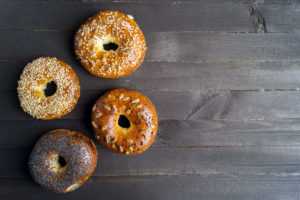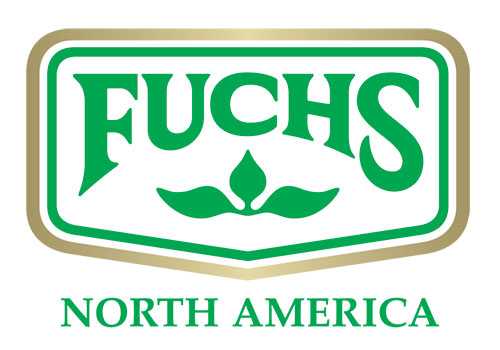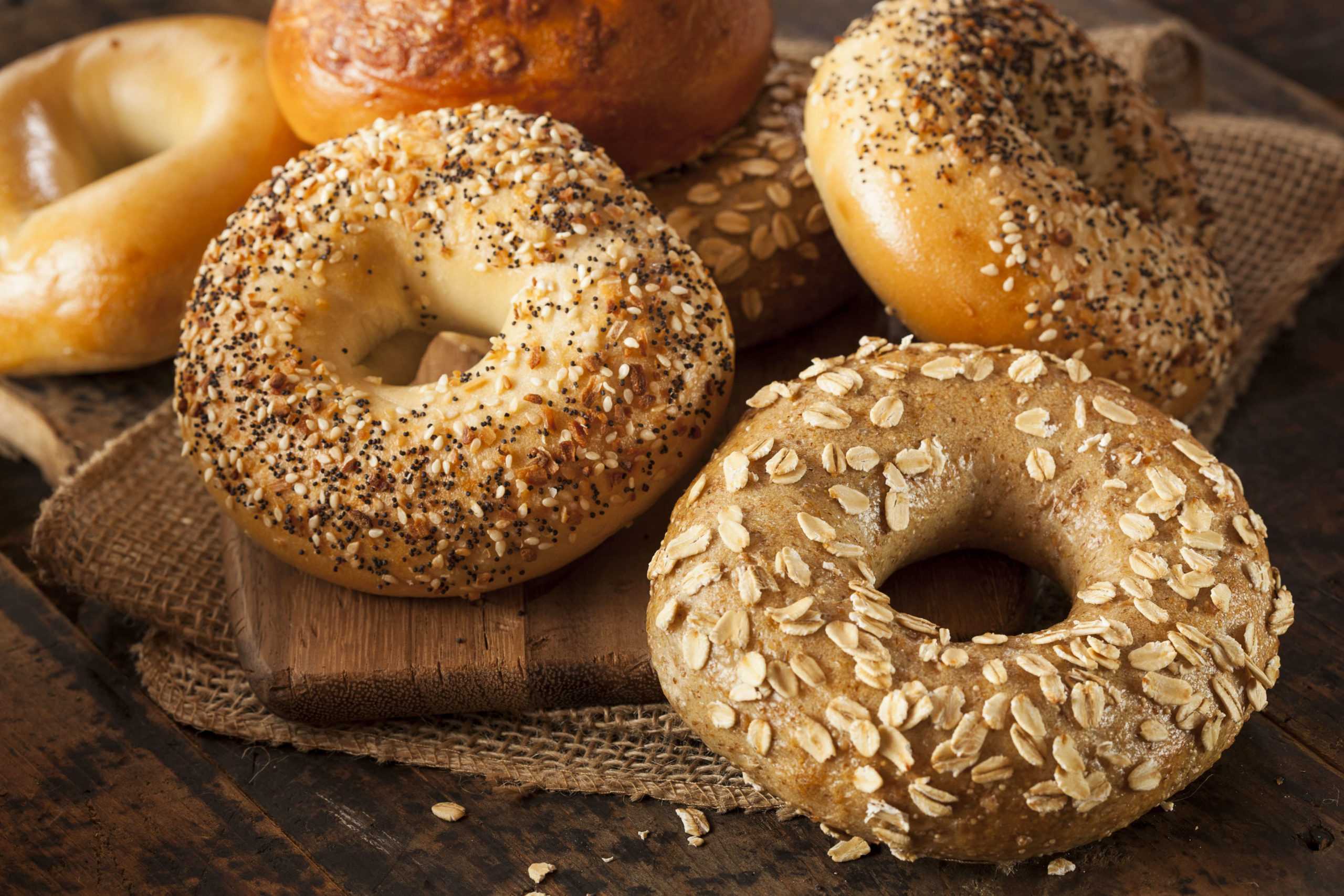In honor of National Bagel Day on January 15th, our expert on all things bread, Food Scientist Alyssa Chircus, breaks down the process behind creating this beloved breakfast food.
Bagels are a low hydration bread – meaning that they require a much lower than normal amount of liquid to make the dough. This helps create the firm chewy texture that is so characteristic of bagels. At the most basic level, bread has 4 main ingredients: flour, water, salt, and some form of leavening agent (yeast, sourdough culture, or chemical leavening). Many bagels also have some form of sweetener and fat to both help develop the flavor of the bread and create a tighter and spongier crumb. The sweetener will vary based on the baker’s preference and the region in which the bagel is made. Honey is used in Montreal style bagels, for example, while New York style bagels more often use a barley malt-based sweetener.

After this long proof, the bagels go into the first of two cooking steps. The bagels are boiled for no more than 90 seconds in a bath that may contain lye, barley malt syrup, honey, or baking soda. All these inclusions help develop a darker brown crust, but they contribute differently to the final flavor. Lye and baking soda create a basic solution which will lend to a slightly more bitter flavor on the final crust while honey and barley malt are sweeteners. After leaving the boil, the bagels get dressed in any toppings or seeds. Lastly, the bagels are baked to finish off the cooking process and develop a nice golden-brown crust.
Looking to take your bagels to the next level? Contact us today to see how Fuchs can help you make something special.
About the Author




 For more information about Fuchs North America's products and programs that support food manufacturers in their product development needs, please
For more information about Fuchs North America's products and programs that support food manufacturers in their product development needs, please